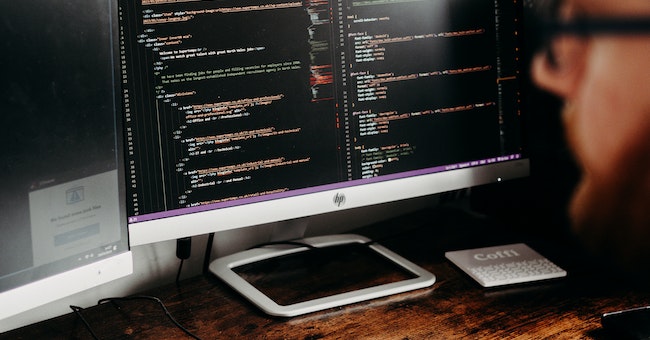Deep Dive into Golang's While Loop: Exploring Syntax and Usage

Introduction
Loops play a crucial role in programming as they allow us to execute a block of code repeatedly. They enable us to iterate over data structures, perform conditional checks, and automate repetitive tasks. Without loops, programs would be limited in their functionality and efficiency.
Golang, also known as Go, is a modern programming language designed to be simple, efficient, and scalable. While Golang provides various looping constructs, one of the most commonly used ones is the "while" loop. The while loop allows us to repeatedly execute a block of code as long as a given condition is true.
Golang's while loop offers several advantages. Firstly, it allows for flexibility in defining the condition for loop execution. This means that programmers have the freedom to set specific conditions for the loop to continue running. Secondly, the while loop enhances code readability by explicitly stating the loop condition, making it easier for others to understand the code. Lastly, the while loop provides programmers with precise control over when the loop starts and stops, giving them greater control over the flow of their program.
In today's article, we will delve into the basic fundamentals of while loop, compare it with other construct products for looping, and explore some of the most trusted online courses that can boost your confidence in knowledge base in the realm of Golang.
Understanding Golang's While Loop
The syntax of the while loop in Golang is as follows:
for condition { // Code block to be executed }
The while loop starts by evaluating a condition. If the condition is true, the code within the loop's body is executed. After the execution, the condition is re-evaluated. If the condition remains true, the code is executed again, creating a loop. This process continues until the condition becomes false, at which point the loop is exited, and the program continues with the code that follows the loop.
Purpose and Example of While Loop in Golang
The purpose of the while loop is to repeatedly execute a particular block of code as long as a certain condition remains true. This looping construct is designed to allow programmers to implement iterative solutions for various problems.
By using the while loop, programmers can design algorithms that repeat a specific set of instructions until a desired outcome or condition is achieved. This is particularly useful when the exact number of iterations is uncertain or variable and depends on some dynamic factors.
The flexibility of the while loop allows programmers to implement various iterative algorithms. For example, it can be used to iterate over elements in a data structure, process input until a specific condition is met, perform calculations until a desired precision is reached, or continuously monitor a system until a particular event occurs.
Here's an example of a while loop in Golang:
package main import "fmt" func main() { i := 1 for i <= 5 { fmt.Println(i) i++ } }
In this example, the loop starts with i equal to 1. As long as i is less than or equal to 5, the loop continues executing the code block. The value of i is printed, and then i is incremented by 1. This process repeats until i becomes 6, at which point the loop terminates.
While Loop in Golang vs. Golang For Loop
In Golang, there are two primary looping constructs: the while loop and the for loop. Both loops serve similar purposes of repeating a block of code, but they have different syntax and are suitable for different scenarios. Let's take a closer look at the differences between the while loop and the for loop in Golang.
The while loop is a basic loop construct that repeats a block of code as long as a given condition remains true. It follows a simple structure where the condition is checked before each iteration. If the condition is true, the loop body is executed, and the process continues until the condition becomes false. The syntax of the while loop in Golang is as follows:
for condition { // code to be executed }
On the other hand, the for loop in Golang is more versatile and commonly used. It provides a concise and structured way to iterate over elements or perform repetitive tasks. The for loop consists of three parts: initialization, condition, and post-statement. The initialization sets up any necessary variables, the condition determines when the loop should continue executing, and the post-statement updates the loop variables after each iteration. The syntax of the for loop in Golang is as follows:
for initialization; condition; post-statement { // code to be executed }
Compared to the while loop, the for loop provides more control and flexibility. It allows you to initialize loop variables, specify the condition for loop continuation, and define actions to be taken after each iteration. This makes it well-suited for iterating over collections, such as arrays or slices, or performing a specific number of iterations.
The for loop is especially useful when you know the exact number of iterations required or when you need to iterate over a specific range of values. It simplifies the code by consolidating the initialization, condition, and post-statement into a single construct.
In contrast, the while loop is typically used when the number of iterations is uncertain or when you want to repeat a block of code until a specific condition is no longer true. It offers more flexibility in terms of dynamically determining the loop termination condition.
In summary, the while loop in Golang is suitable for situations where the loop condition is evaluated before each iteration, allowing for dynamic termination conditions. The for loop, on the other end of the spectrum, is better suited for scenarios where the number of iterations is known or when you need more control over the loop variables and iteration steps. Both loops have their own strengths and can be used effectively depending on the specific requirements of your code.
Best Practices and Tips
Proper Initialization of Loop Variables
When using the while loop, it's crucial to ensure proper initialization of loop variables before the loop starts. This initialization sets the initial state of the loop and ensures the loop condition is correctly evaluated.
For example, if you're iterating over an array, make sure the loop variable representing the index is properly initialized to the first index.
Ensuring Loop Termination Conditions for Avoiding Infinite Loops
To prevent infinite loops, always double-check the loop termination conditions. Make sure the condition will eventually evaluate to be false during the loop execution.
Carefully review the loop condition and any variables used within the condition. Ensure that the loop variable or any other relevant variables are updated within the loop body to avoid infinite looping.
Optimizing Loop Performance with Efficient Code Practices
To optimize loop performance, consider the following practices:
Minimize expensive operations within the loop body: If possible, move costly computations or I/O operations outside the loop to reduce the overall execution time.
Avoid unnecessary iterations: Use appropriate loop termination conditions to avoid unnecessary iterations. This can significantly improve performance, especially for large data sets or complex computations.
Consider parallelization: In certain cases, it may be possible to parallelize the loop execution using goroutines in Golang. This can utilize multiple CPU cores and speed up the overall processing time.
Remember, optimization should be done in a judicious manner. It is always better to focus on critical sections of code rather than do premature optimization.
Learning Resources and Further Exploration
To deepen your understanding of the while loop in Golang and explore more about its syntax and usage, it is advisable to consider a wide variety of resources, ranging from official documentation to online courses.
Official Golang Documentation
The official Golang documentation is an invaluable resource for programmers working with the while loop in Golang. It offers comprehensive information on the while loop, including its syntax, examples, and best practices for effective usage. By accessing the official Golang documentation at https://golang.org/doc/, you can navigate to the section specifically dedicated to the while loop.
In this section, you will find detailed explanations of the syntax used in Golang's while loop. It will provide you with a clear understanding of how to structure the loop condition and the code block that gets executed repeatedly. Additionally, the documentation offers various examples that illustrate different scenarios where the while loop can be applied effectively.
One of the advantages of the official Golang documentation is its emphasis on best practices. It not only teaches you how to use the while loop correctly, but also provides guidelines on writing clean and efficient code. Following these best practices ensures that your code is maintainable, readable, and optimized for performance.
To access the official Golang documentation, simply visit https://golang.org/doc/ in your web browser. From there, you can explore the different sections and search for the while loop specifically. The documentation is regularly updated, ensuring that you have access to the most accurate and up-to-date information.
Online Tutorials and Guides
There are numerous online tutorials and guides that can help you dive deeper into the concepts and implementation of the while loop in Golang. These resources provide step-by-step explanations, code examples, and practical exercises to enhance your understanding.
Whether you are interested in the exact syntax and usage of While Loop or For Loop, or know-how related to any other constructs, AZClass offers a wide selection of courses designed to help you master these tools and start bringing your ideas to life. With AZClass, you can find a course that fits your specific needs and learn at your own pace, building your skills and confidence along the way.
In the Golang Online Courses Catalog, we have gathered useful courses for you to embark on the journey of brainstorming. In particular, here we have a couple of courses that are definitely worth your attention.
Getter & Setter in Golang GOLANG BEGINNER COURSE
This is a beginner-level course offered on Youtube. It focuses on teaching the basics of Getter & Setter in Golang, a programming language. By taking this course, learners can gain a solid understanding of how to create and utilize Getter & Setter functions, as well as debug and troubleshoot code effectively. It is designed to help learners grasp the fundamentals of Golang and enable them to develop powerful applications using the language. The course is suitable for beginners starting their journey with Golang and individuals aiming to expand their programming knowledge.
Pros of the Course:
Comprehensive Learning
Practical Application
Debugging and Troubleshooting
Career and Education Opportunities
This is an online course that primarily aims to teach learners the basics of the Go programming language in just 60 minutes. The course covers fundamental topics such as variables, functions, control flow, and the usage of the Go standard library. Learners will also gain knowledge in writing their own packages, debugging, and testing their code. By the end of the course, participants will have a solid understanding of Go and be capable of writing their own programs. The instructor encourages learners to follow their social media for ongoing support.
Pros of the Course:
Time Efficiency
Comprehensive Coverage
Suitable for Beginners
Practical Application
Career and Education Advancement
Supportive Instructor
Complete Go Web Development Course - Golang Tutorial For Beginners
The "Complete Go Web Development Course - Golang Tutorial For Beginners" is an online course that focuses on teaching the fundamentals of web development using the Go programming language. The course covers various aspects of web development, including authentication, working with sessions and cookies, using a template engine, accessing databases, routing, middleware, form processing, and form validation. Learners will also have access to the complete course code in the repository. By the end of the course, participants will have a solid foundation in Go web development.
Pros of the Course:
Comprehensive Coverage
Suitable for Beginners
Hands-on Learning
Career Development
Project Building Skills
Exploration of Related Topics
Instructor Support
Conclusion
In this article, we took a deep dive into Golang's while loop, exploring its syntax, usage, comparisons with other looping constructs, and offering some practical tips.
Comparisons with other looping constructs, specifically the Golang for loop, were made to highlight the unique features and advantages of the while loop. While both constructs have their merits, the while loop's simplicity and flexibility still make it an excellent choice for certain scenarios.
Additionally, we mentioned various learning resources and further exploration options, including the official Golang documentation and online tutorials on AZClass. These resources offer valuable insights, examples, and exercises to enhance your understanding of the while loop and improve your Golang programming skills.
In conclusion, the while loop in Golang is a powerful construct that enables developers to create iterative solutions for a wide range of problems. Its versatile competence in handling coding tasks makes it a valuable asset in any Golang programmer's toolkit. By mastering its syntax, understanding its theories and techniques, and following best practices, you can leverage the full potential of the while loop.





